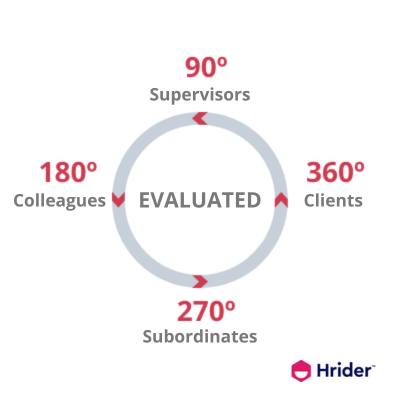Performance Appraisal is a systematic process that quantitatively and qualitatively estimates the degree of efficiency with which people carry out our activities and responsibilities of our jobs, as well as our development potential within the organization. Its benefits were described in our previous post 10 Reasons to Do a Performance Evaluation.
However, to carry it out effectively we must reflect on the errors into which we can fall and become aware of them in order to avoid them.
1. The fundamental aspect is related to the Objective of the performance evaluation: you should never lose sight of the purpose of the evaluation is to improve, promote motivation and foster joint responsibility. Only in this way can our organization be more competitive.
It is one of the best instruments to facilitate managers relationship with their collaborators, based on objectivity and transparency and also contributes to the formation of effective work teams. Thinking of it as a coercive instrument is one one of the worst mistakes we can make.
Assessment will help us foster a culture that contributes to oleveraging complexities and being open to learning. It predisposes us to highlight the positive aspects that make us more competitive and those to which we that we must face them without fear in order to overcome them successfully.
2. When it comes to implementing an evaluation system, we cannot afford to forget the importance of formality in the process. You must notify in advance the whole organization and meet the deadlines scheduled for its different phases. This way we give interest, credibility and value to the initiative, promoting the commitment of all the team.
3. We must design the process in a simple way with measurable and achievable objectives, developing survey models that are easy to understand by all employees. Thus, we will avoid that evaluators don't agree on the grading criteria and we will be able to obtain objective results for our organization.
“Between two explanations, choose the clearest; between two forms, the most elementary; between two expressions, the shorter one”. Eugeni d'Ors
4. All feedback, especially the one we give in our professional environment, must have as objective motivating the partner to make things better and better, facilitatesdoing their learning this way. Do not give constructive feed-back it may jeopardize the fundamental objective of the evaluation process and cause adverse effects. Two fundamental factors must be taken into account when evaluating: respect and argumentation.
Nobody will be able to convince us of something without objective arguments. If we want our vision to be taken into consideration, we must evaluate based on demonstrable facts, not subjective appreciations. We are already raising our self-evaluation or the evaluation to our subordinates and supervisors.
5. Making evaluations so far apart in time that they stop being a systematic process. If we only give feedback once a year, it is most likely that:
- let's not make it easy to continuously improve so that people know what they are doing well and where they need to improve.
- the decisions we make based on the resultstwhenever they arrive late and we lose the ability to act.
- we will lose the opportunity to communicate those short-term objectives that are key to the competitiveness of the organization.
Until not long ago, setting up an evaluation process took months of work, now in a couple of hours you can automate it and have results in real time!
6. Underestimating the importance of self-assessment, since this is the way that allows us to express the vision about something we know better than anyone: our own work activity. It is essential that the organization listens to us actively and learn how to look like professionals so that you can make the most appropriate improvement or recognition approach for each of us.
7. Meet halfway. Sometimes, the fear or the false belief that we will dedicate more time, makes us forget the potential of 360º Evaluation processes. There is no more objective measurement than the one that has been contrasted with the greatest number of possible sources. In addition, if we have a good system that automates the process, there will be no difference between tackling a 90º and a 360º process.

8. When completing the evaluations, we must avoid taking into account only the most recent performance (of the last days) and generalize the rating over the entire period to be evaluated. Psychologists call this bias proximity. We must also be careful with the central tendency, which is the inclination to evaluate with the intermediate qualification (Ex: value with a 3, when the levels are from 1 to 5) to avoid pronouncing negatively or positively.
9 . The evaluations that we carry out must be made according to the performance levels required for the position that we are evaluating. We should never compare different classmates with each other, either to overestimate someone in relation to others with poor performance or to demand the same from others with a position of greater responsibility.
10 . One of the most serious errors is not executing an Action Plan after obtaining the results, whether in the case of individual initiatives with employees and actions at a global level in the organization.
You have to reward the achievements of exceptional performance and support with concrete actions (training or others) those who need to improve in some aspect.
A measurement indicator by itself will not be able to achieve the desired goals. It is true that only through objective measurement is it possible to identify and quantify opportunities for improvement, but they must be carried out!
We can't neglect the follow-up of our Plan and what better technique to contrast the results of the same than to do it through agile evaluations with enough periodicity?.
Finally, here we have an article about what actions you should take after a performance evaluation.
And remember: Evaluate, Measure, Act and Start Over!
*Image under CC license from Steve Buissinne